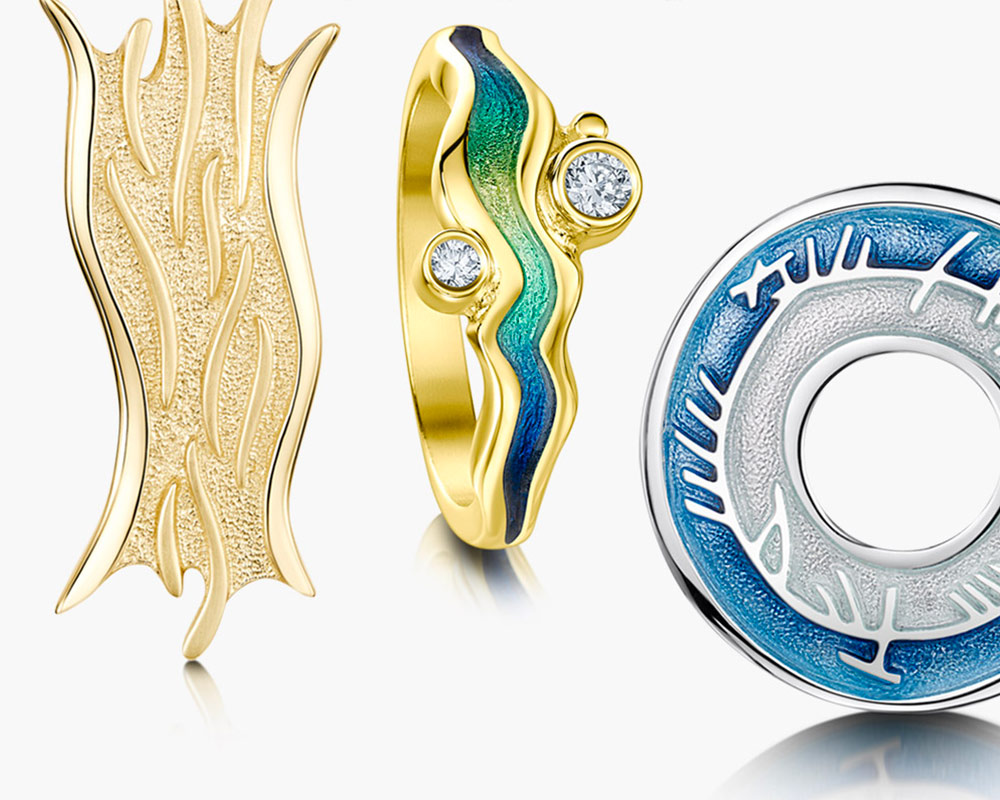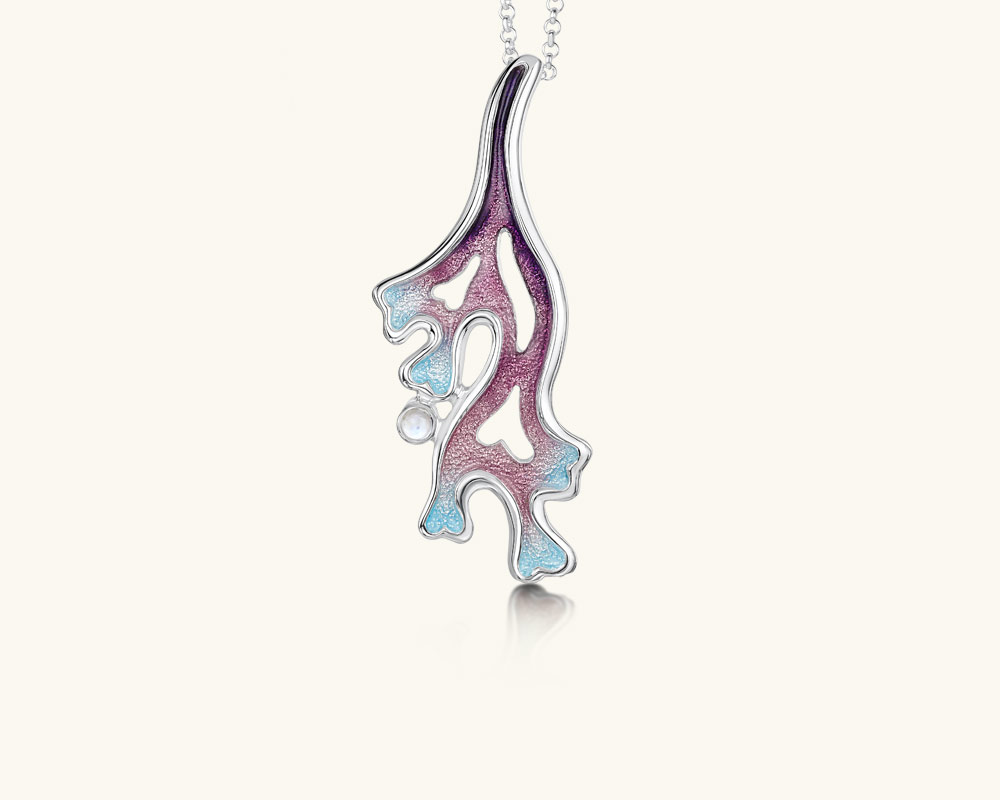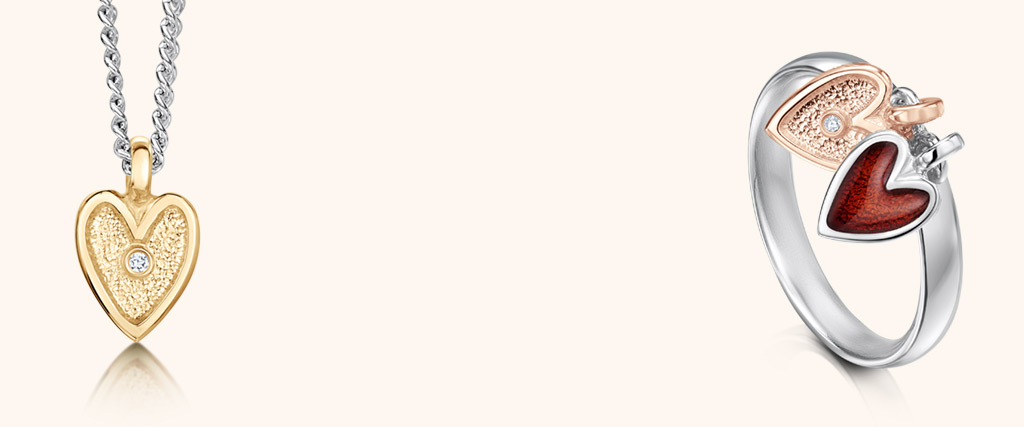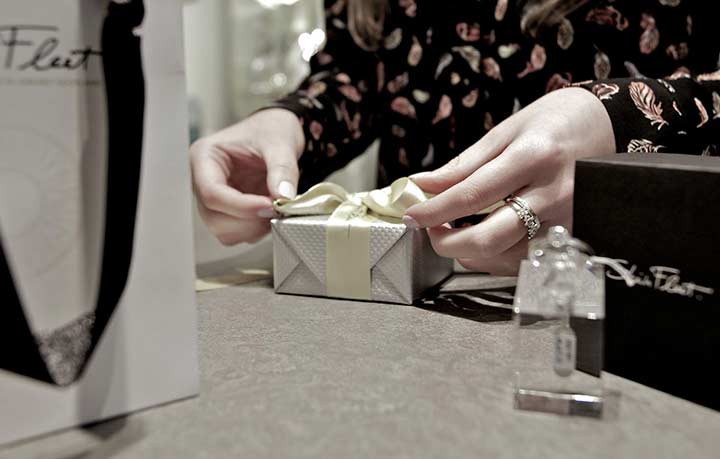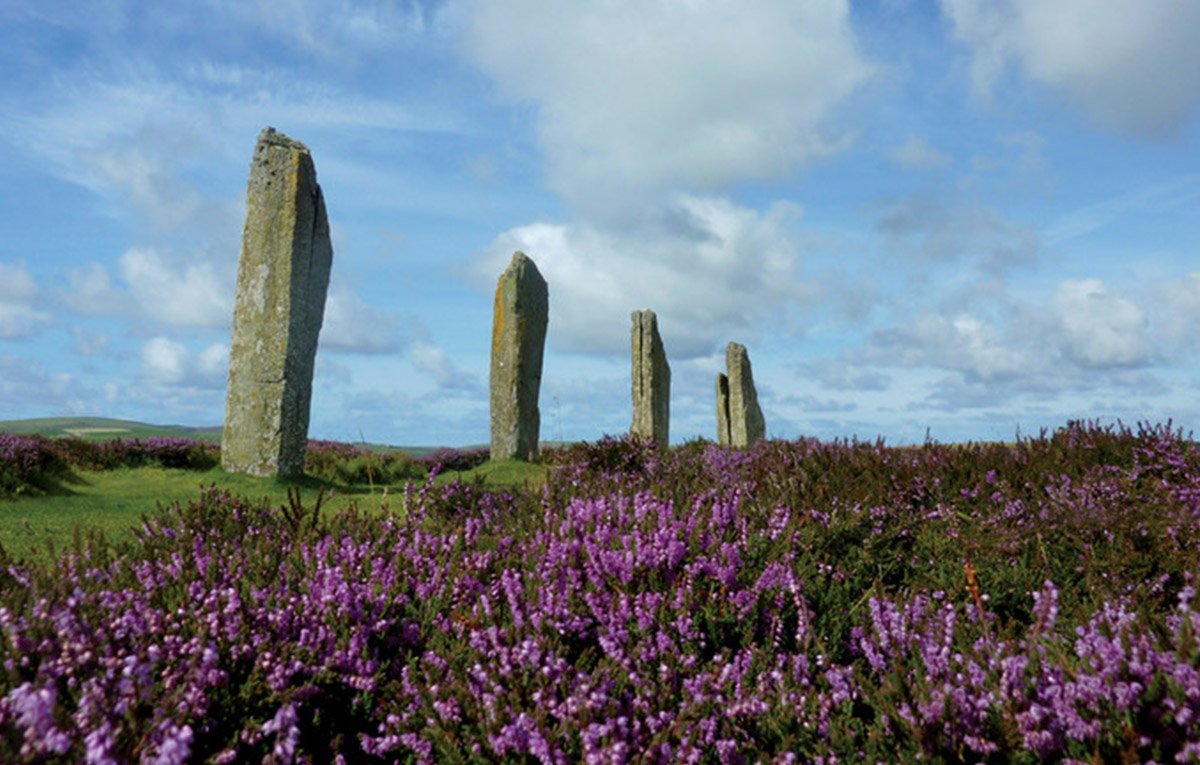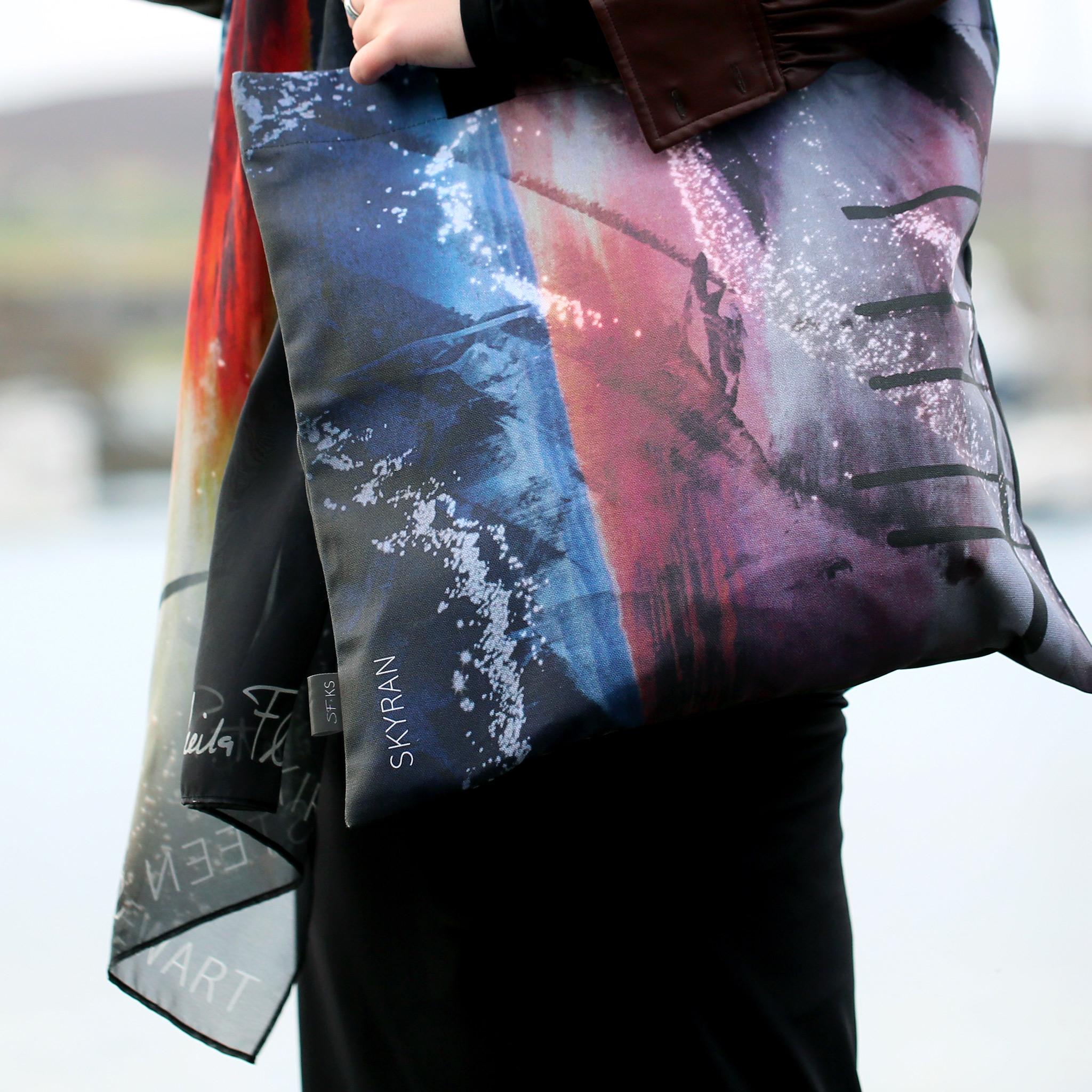
Mined, Designed and Made in Scotland
Sheila Fleet is one of only two jewellers in the world authorised to make and sell Scottish Gold from Cononish Gold Mine, Scotland's only commercial gold mine.
If you would like to own and cherish a unique Sheila Fleet Scottish Gold design in exclusive 18ct yellow, white or rose gold, please contact Maureen Moar on +44 (0)1856 861 203 or email us at scottishgold@sheilafleet.com.

Scottish Gold comes from the Cononish Mine, set within remote hills in the west of Scotland, near the village of Tyndrum. The mine is named after the valley where it sits and the river it overlooks—Cononish meaning 'where the waters meet' in Gaelic.
Cononish Gold Mine is Scotland's only commercial gold mine and Sheila Fleet Jewellery are honoured and delighted to receive the very first gold to be made available to jewellers.
The operators of Cononish Mine are acutely aware of the wild mountainous environment in which they are working and use only clean, modern methods to recover the gold. The supply of gold from Cononish is in small quantities due to a limited production run. Consequently, rings and jewellery made in this beautiful metal are rare and exceptional items to own now and in the future.

Read more about Scottish Gold in our blogs
-
Cononish Scottish Gold
Sheila was present at the official opening of the mine on 3 August 2016. A very exciting day! -
First Scottish Gold Sold
Scotgold auctioned 12 one-ounce coins or 'rounds' of Scottish Gold in November 2016. Sheila was delighted to win number six.

Frequently Asked Questions about Scottish Gold
- How do I know my jewellery is made from authentic Scottish Gold?
- How is Scottish Gold different from ordinary gold?
- How much Scottish gold is in each piece of jewellery?
- Will Scottish Gold jewellery cost more?
- How long will items take to be made in Scottish Gold?
- Who is involved with Scottish Gold?
How do I know my jewellery is made from authentic Scottish Gold?
Great care has been taken to protect the origin and the provenance of Scottish Gold. The operators of Cononish Mine work closely with Edinburgh Assay Office and UK refiner Betts Metals, who manage a 'closed loop' supply chain with 'chain of custody' controls at each stage.
At no point can Scottish Gold be mixed with other sources, from the moment the gold leaves the mine to the final stage when it becomes a piece of jewellery. Sheila Fleet Jewellery has agreed to adhere to strict rules on how they use the gold. Furthermore, the Edinburgh Assay Office has employed a stringent technical method of confirming the origin and authenticity of Scottish Gold. Once the gold is made into jewellery, it is sent to the Edinburgh Assay Office to be hallmarked as either 18 carat or 22 carat gold. At this stage the jewellery will be tested for authentic Scottish Gold and, if positive, will be marked with the Sheila Fleet Scottish Gold Mark. In addition, all jewellery made by Sheila Fleet using Scottish Gold will be accompanied by a certificate of authenticity and a unique serial number.
How is Scottish Gold different from ordinary gold?
Cononish Mine is located in a remote, stunning mountainous landscape, which forms part of the Loch Lomond and Trossachs National Park. The Cononish mine uses chemical-free, clean, modern methods to recover the gold. A 'gravity and flotation' method separates the gold from the host quartz and any processing is completed safely off-site. It is vital that the clear streams and rivers of the west of Scotland remain uncontaminated and pure for future generations. Cononish Mine's management are committed to respecting and preserving the natural surroundings, the vegetation and the wildlife in this truly golden glen.
Gold jewellery that bears the Sheila Fleet Scottish Gold Mark is guaranteed by the Edinburgh Assay Office as being made from 100% pure Scottish Gold.
How much Scottish gold is in each piece of jewellery?
In any jewellery that bears the Sheila Fleet Scottish Gold Mark, 100% of the gold used comes from Cononish Mine. No other sources of gold are used in these items. However, pure gold is too soft to use in jewellery by itself. Gold must be alloyed with other metals such as silver, rhodium or copper to make it strong enough to retain its shape and hold gemstones in place. Betts Metals is a 9th generation family business and a highly reputable refiner. They have been alloying gold since 1985 but their metal dealing business dates back to 1760. The Edinburgh Assay Office's primary purpose is to independently test each jewellery item to be sold as gold to make sure it contains the correct amount of pure gold to be marked as 22ct, 18ct or 9ct. The Assay Office then stamps the piece of jewellery with the appropriate hallmark. Sheila Fleet is offering customers 18ct Scottish Gold.
All of the gold content in jewellery marked with the Sheila Fleet Scottish Gold Mark is certified by the Edinburgh Assay Office as being from Cononish Mine in the west of Scotland.

Will Scottish Gold jewellery cost more?
Yes, there will be additional costs for ensuring the provenance of the gold. The gold must be segregated from all other sources of metals and kept separate at each stage of processing. When gold is mined, it is bound with other rocks and minerals. To recover the gold, the mined ore needs to go through several processing steps, ending in smelting and refining, to produce a pure gold suitable for the jewellery market.
When gold reaches a refinery, it is usual for it to be smelted together with other sources of gold. Scottish Gold from Cononish Mine is not mixed with any other gold. Scottish Gold is delivered in specially sealed containers to the refiners, Betts Metals, who refine the gold in isolated batches, segregate it and store it separately in designated containers. The Vault Manager records the weights each time the gold is removed and placed back into the vault.
Once the gold is refined, it must be alloyed with other metals to make it strong enough for use in jewellery. When the Assay Office receives a piece of jewellery to hallmark, they will also undertake a stringent test to ensure the jewellery is made from authentic Scottish Gold. Only jewellery that achieves a positive test result will be marked with the Sheila Fleet Scottish Gold Mark. These careful measures inevitably make the product more expensive but serve to protect the integrity of Scottish Gold's origin and provenance.
How long will items take to be made in Scottish Gold?
Due to its rarity and the challenge of extracting gold from the Cononish Mine, limited batches of Scottish Gold are produced. Following a recent delivery of refined Scottish Gold, we are now taking orders. Delivery dates are subject to change depending on limited availability, with orders taking 8-10 weeks to be made, although this can sometimes be earlier by special request. We advise interested customers to enquire as early as possible.
Who is involved with Scottish Gold?
Edinburgh Assay Office will stamp all jewellery verified as being made of Scottish Gold with the Sheila Fleet Scottish Gold Mark. This mark depicts the ‘SF’ initials from the official Sheila Fleet Jewellery logo and guarantees that all gold within the whole item is Scottish Gold from Cononish Gold Mine in the west of Scotland. An additional hallmark verifies the Scottish Gold as either 18 carat or 22 carat. Scottish Gold will only be available at these high carats and not as 9 carat gold. Sheila Fleet is offering customers the choice of Scottish Gold as 18 carat yellow gold, white gold or rose gold.
Betts Metals, the Edinburgh Assay Office and Sheila Fleet Jewellery developed and oversee a secure 'chain of custody' from the mine to the completed piece. At no point can Scottish Gold be mixed with other sources of gold. Scottish Gold is segregated and treated separately at Betts Metals and at Sheila Fleet Jewellery.


